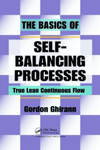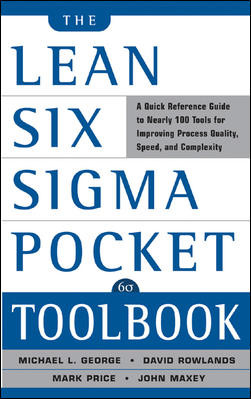Leading Lean: Build on Your Success
Any process can benefit from planned reflection to learn and drive improvement.
I was working off-site for several days with a management and union leadership team, and we joked that the manufacturing operation would probably work better without management interference.
Sure enough, the site produced more on one of those days than on any other day in the company’s history. At first, the team members celebrated the success. Then I asked whether they intended to reflect on what made that day so successful, so they could repeat the performance. There was a long silence as it sunk in that this would have never occurred, and the following day’s production would revert back to average performance.
This organization is not unusual. Most organizations, and most of us, spend the vast majority of our time trying to understand what’s broken so we can fix it. We spend very little time reflecting on what is working and why. We assume that things that are working will continue to work if we just leave them alone. Unfortunately, this line of thought very much limits our opportunities to learn. If we don’t understand why things work, we won’t be able to keep them working in the long term.
Reflection means pausing to look back at what just occurred, learning both good and bad, and then applying that learning toward improvement. A racing team uses this process. It runs its car for several hours, and then has an entire week to reflect and begin applying the lessons towards the next week. But in manufacturing, the assembly line doesn’t stop and the customer demand doesn’t pause for us to learn. Soren Kierkegaard said, “Life can only be understood backwards, but it must be lived forwards.” This requires commitment, but one of the most common barriers to people spending time reflecting is that they simply do not know how.
A simple reflecting process-the After Action Review-was created at the U.S. Army National Training Center and became an important part of the Army’s operational transformation. The Review is carried out after every simulated mission and addresses four questions. First: What was supposed to happen? Second: What did happen and why? Third: What successes can we sustain and what weaknesses can we improve? Fourth, and probably most important: What will we do differently?
The power of this process lies in its flexibility. You can spend 5 minutes at the end of a staff meeting reflecting on how to improve staff meetings. Or you can spend an entire day reflecting on how to improve the new product introduction process. Any process-a new hire, a customer visit, a preventive maintenance activity-can benefit from planned reflection to learn and drive improvement.
Planning your reflection in advance is an essential prerequisite. Far too many companies only turn to reflection when things go wrong. There are two major problems with this. First, it sends the message that when people are asked to reflect it means they just failed. This turns reflection into punishment. Second, you miss the chance to learn from success. When you plan to learn, instead of only to react, you can determine your focus, do the correct observation as the event occurs, and then do your reflection. Plan to learn from activities before you know the results.
Beginning a regular practice of reflection does not require organizational commitment. You can start this within your team, or by yourself. All it takes are an appreciation that time for reflection is one of the most important investments you can make, and the discipline to make it a habit. Mahatma Gandhi proclaimed, “Live as if you were to die tomorrow. Learn as if you were to live forever.” Are you investing your time to reflect and learn?
Remember that lean begins with you.
Jamie Flinchbaugh is a founder and partner of the Lean Learning Center in Novi, MI, and the co-author of The Hitchhiker’s Guide to Lean: Lessons from the Road. He shares his successful and varied experiences of lean transformation as a practitioner and leader through companies such as Chrysler and DTE Energy. He also has a wide range of practical experience in industrial operations, including production, maintenance, material control, product development and manufacturing engineering. Jamie is a graduate fellow of the Leaders for Manufacturing Program at the Massachusetts Institute of Technology, where his research thesis was on implementing lean manufacturing through factory design. He also holds a B.S. in Engineering from Lehigh University in Bethlehem, PA, and an M.S. in Engineering from the University of Michigan. To contact Jamie directly, go to the web site www.leanlearningcenter.com.
I was working off-site for several days with a management and union leadership team, and we joked that the manufacturing operation would probably work better without management interference.
Sure enough, the site produced more on one of those days than on any other day in the company’s history. At first, the team members celebrated the success. Then I asked whether they intended to reflect on what made that day so successful, so they could repeat the performance. There was a long silence as it sunk in that this would have never occurred, and the following day’s production would revert back to average performance.
This organization is not unusual. Most organizations, and most of us, spend the vast majority of our time trying to understand what’s broken so we can fix it. We spend very little time reflecting on what is working and why. We assume that things that are working will continue to work if we just leave them alone. Unfortunately, this line of thought very much limits our opportunities to learn. If we don’t understand why things work, we won’t be able to keep them working in the long term.
Reflection means pausing to look back at what just occurred, learning both good and bad, and then applying that learning toward improvement. A racing team uses this process. It runs its car for several hours, and then has an entire week to reflect and begin applying the lessons towards the next week. But in manufacturing, the assembly line doesn’t stop and the customer demand doesn’t pause for us to learn. Soren Kierkegaard said, “Life can only be understood backwards, but it must be lived forwards.” This requires commitment, but one of the most common barriers to people spending time reflecting is that they simply do not know how.
A simple reflecting process-the After Action Review-was created at the U.S. Army National Training Center and became an important part of the Army’s operational transformation. The Review is carried out after every simulated mission and addresses four questions. First: What was supposed to happen? Second: What did happen and why? Third: What successes can we sustain and what weaknesses can we improve? Fourth, and probably most important: What will we do differently?
The power of this process lies in its flexibility. You can spend 5 minutes at the end of a staff meeting reflecting on how to improve staff meetings. Or you can spend an entire day reflecting on how to improve the new product introduction process. Any process-a new hire, a customer visit, a preventive maintenance activity-can benefit from planned reflection to learn and drive improvement.
Planning your reflection in advance is an essential prerequisite. Far too many companies only turn to reflection when things go wrong. There are two major problems with this. First, it sends the message that when people are asked to reflect it means they just failed. This turns reflection into punishment. Second, you miss the chance to learn from success. When you plan to learn, instead of only to react, you can determine your focus, do the correct observation as the event occurs, and then do your reflection. Plan to learn from activities before you know the results.
Beginning a regular practice of reflection does not require organizational commitment. You can start this within your team, or by yourself. All it takes are an appreciation that time for reflection is one of the most important investments you can make, and the discipline to make it a habit. Mahatma Gandhi proclaimed, “Live as if you were to die tomorrow. Learn as if you were to live forever.” Are you investing your time to reflect and learn?
Remember that lean begins with you.
Jamie Flinchbaugh is a founder and partner of the Lean Learning Center in Novi, MI, and the co-author of The Hitchhiker’s Guide to Lean: Lessons from the Road. He shares his successful and varied experiences of lean transformation as a practitioner and leader through companies such as Chrysler and DTE Energy. He also has a wide range of practical experience in industrial operations, including production, maintenance, material control, product development and manufacturing engineering. Jamie is a graduate fellow of the Leaders for Manufacturing Program at the Massachusetts Institute of Technology, where his research thesis was on implementing lean manufacturing through factory design. He also holds a B.S. in Engineering from Lehigh University in Bethlehem, PA, and an M.S. in Engineering from the University of Michigan. To contact Jamie directly, go to the web site www.leanlearningcenter.com.
Looking for a reprint of this article?
From high-res PDFs to custom plaques, order your copy today!





